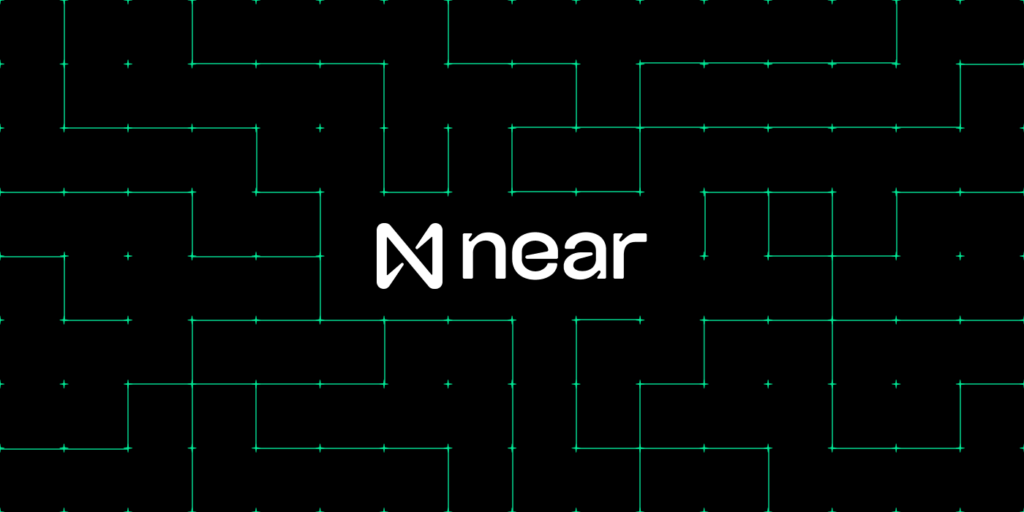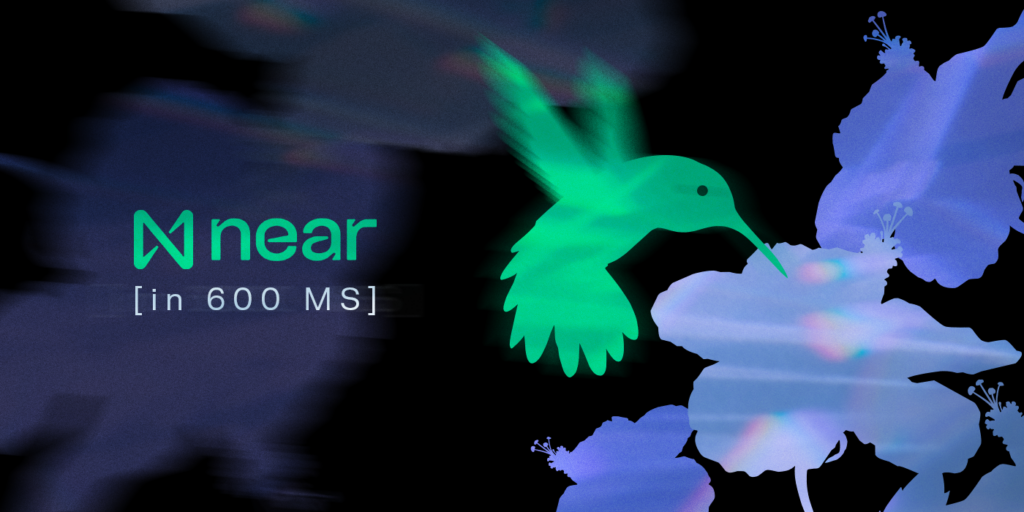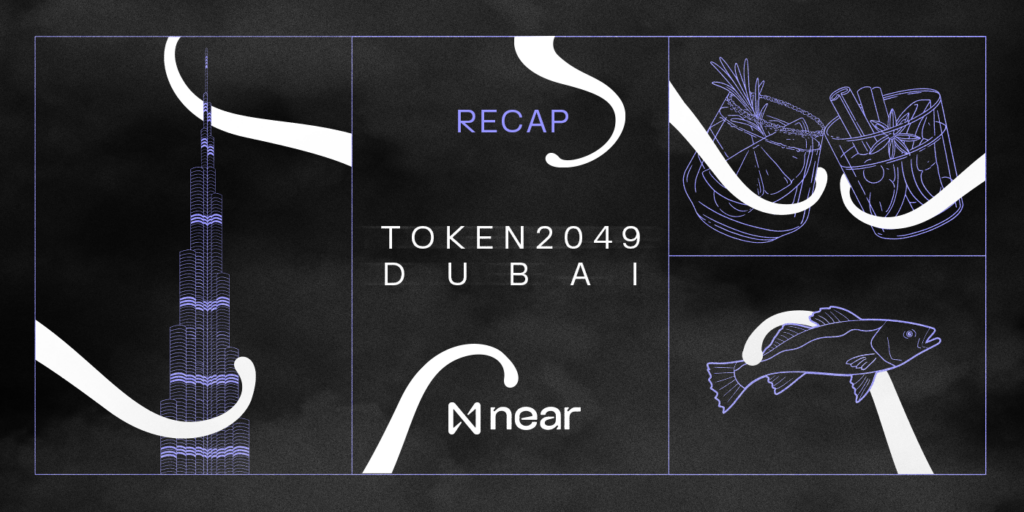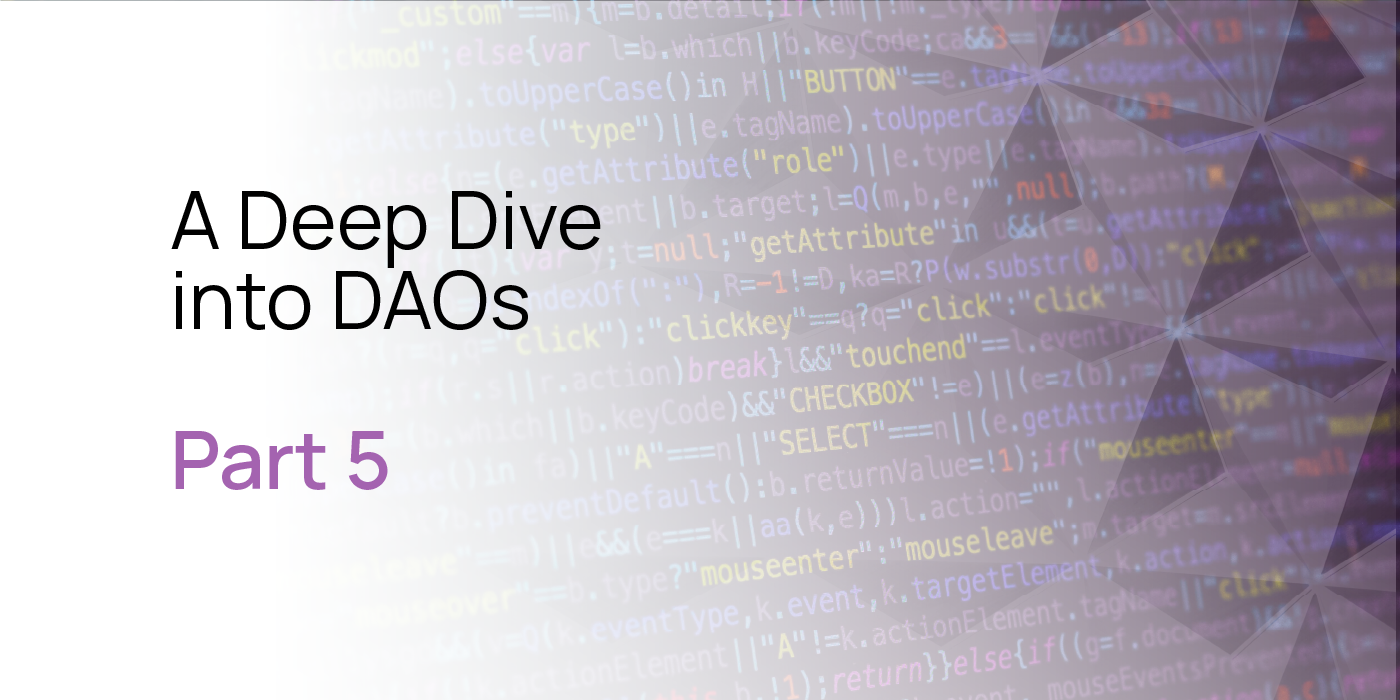The Future of DAOs: DAOs at Work and IRL
In “DAOs of the Near Future” Part I, we explored how DAO tooling, coordination, and standards will be crucial going forward. Now that we can imagine the ways in which DAOs can be improved, let’s explore how they will change things IRL.
As Web3 matures and goes mainstream, existing alongside and working in concert with Web2 platforms, DAOs will impact the world in more physical ways, from work to ReFi and sustainability to automation of business documentation and beyond.
Let’s take a look at how DAOs are already evolving, and how this process will be accelerated for mass Web3 adoption.
The DAO of work
In the last few years, remote employment changed how people work—up to a point. But it’s possible that DAOs will be even more transformative with work in terms of how, when, how long, and under what conditions.
With more transparency in contracts and fund transfers, Marma J Foundation’s Chloe Lewis thinks DAOs will allow community members to work on what they want, when they want to, without worrying about the next paycheck.
“When you can see publicly that there are hundreds of funded DAOs that have open gigs, it’s less stressful to think of working for DAOs as being a reasonable way of life,” Lewis muses. “I also see DAOs using their governance token as a way to fund more projects without really selling or giving away the token through more advanced DeFi opportunities.”
Belonging to a DAO is, in effect, a new type of work. A person isn’t hired so much as they join a DAO in a more participatory way.
With DAOs, work’s traditional top-down command structure can be flipped. This will create a fairer entry for ambitious individuals looking to get rewarded based on participation, output, and unity.
“Coming from both a startup and corporate world, I can say that a DAO is not comparable,” says Trevor Clarke, founder of Croncat, which does decentralized scheduling NEAR blockchain transactions. “A DAO utilizes elements of both, but when a startup or corporation would constantly require higher authority chains to finalize direction, DAOs can simply allow the community to be the decisive force.”
Open Forest Protocol’s Rim Berjack is full-time crypto and notices that when she introduces herself, or interacts with different projects and stakeholders, she identifies herself as her role in the DAO. This isn’t simply an add-on to who she is. It’s necessary since she works as part of a DAO, and the DAO actually makes decisions and implements changes in projects.
“If I were to try and explain that I work for a DAO to my parents, they wouldn’t really understand what that means and not really consider it a ‘job,’,” she says. “But when you think about it simply in terms of effects, if you contribute to something, you produce results, and get compensated for it, that’s work.”
In the current Web3 space, working for a DAO means freedom and creativity, with work being self-motivated and “earned” rather than assigned. A very startup-like ethos. Right now, DAOs offer a lot of equality and very little hierarchy in the decision-making processes.
“Working in a DAO is a testimony to the nature of work in crypto at large, which is much more entrepreneurial, undefined, and therefore creative,” says Berjack. “I was at ETH Denver recently and a Coordinape and Yearn contributor talked about how in DAOs work is defined by the intersection of what you like, what you can do, and what the project needs.”
There is a lot of fluidity and flexibility in DAO governance, and this likely has something to do with the lack of contractual obligations for work. This might change for certain DAOs, like those operating in the DeFi space, who might be working with sensitive financial information. In the future, those DAOs that want a more traditional mode of work will balance it with the free-wheeling, creative Web3 startup ethos.
Beyond flattening work hierarchies, H.E.R. DAO’s Tracey Bowen sees future DAOs shifting the autonomy of work—centering the human rather than the company or machine.
“The DAOs of the future will look markedly different from today,” Bowen says. “Less dogmatic and rigid concerning technical requirements and more geared towards serving the needs of groups and populations across the globe.”
“Equity is the new currency of our future cooperative world,” Bowen continues. “It’s the foundation on which many new Web3 projects are being built, and will be the standard bearer and rating system related to the efficacy of our ideas and the authenticity of our practices.”
Jordan Gray of AstroDAO, a DAO launchpad platform, has a lot of different ideas on how DAOs will impact the world. For one, he thinks DAOs will have a huge impact on how business will be conducted.
“The last time things were really revolutionized in the business world was with spreadsheets—people use them to do any kind of business, computation, or keeping track of things,” says Gray. “I think that DAOs are going to revolutionize business in a very similar way, where many things that happen with spreadsheets are going to be automated, and processes are going to get put in place and cemented into code that allows organizations to work a lot more efficiently.”
“That’s where I see DAOs maturing on the legal front, so that things like that are possible,” he adds. “That’s also where I see a huge opportunity in the future.”
Jessica Zartler, Communications Advisor and Researcher at BlockScience, hopes that people won’t work for DAOs as anthropomorphized entities.
“[Ideally, people will] share collective ownership of the value created in the network and have unconditional basic income,” she says. “This will enable them to choose to work on things they are more passionate about—exploring via natural curiosity and intrinsic motivation.”
Others aren’t so sure how DAOs will change the nature of work. But many Web3 natives, including Luis Freitas, Co-founder of 3XR—a platform for creating customer experiences like VR galleries—believe that DAOs are already changing how people work and cooperate in the NEAR ecosystem and on other blockchains.
“When I started thinking more actively about DAOs in 2020 it was mostly because I was working remotely with a global team on a project owned by us—the team,” says Freitas.
“Now, I’ve started DAOs [DAOLEX and VR DAO] for the exact same reason and I think it has not only changed the way I work but also for everyone involved.”
DAOs IRL
Some might wonder how DAOs will interact with things outside of crypto. This was a question also put to developers of Web1 and Web2 platforms. The truth is that Web3, and DAOs themselves, are already IRL.
“If we understand DAOs as a tool providing two primary functions—a digital stamp (for immutably publicizing decision making) and an on-chain treasury—then there is always the ‘swan’s legs underneath’ of weekly Zoom syncs, discussions on forums, notifying people on Telegram to vote on proposals, that happen off-chain, accompanying what is visible on-chain,” Berjack explains. “So, in that sense, you could say DAOs are never a purely on-chain affair.”
In the more literal sense, the physical and virtual worlds of Web3 are already being connected. OFP is a leader in the ReFi (regenerative finance) space, which is currently experiencing a lot of momentum. OFP acts as a “forest oracle,” bringing data from real forests and trees planted, then verifying them on-chain through the distributed network of validators.
Berjack says that OFP is also planning to progressively decentralize and govern itself as a DAO. And they aren’t the only projects in the ReFi space doing so. The ReFi platform Ecorise’s DAO buying up land, staking it (as an NFT) in their vault, and creating a coin pegged to these natural assets to create an alternative income stream for ecosystem services and regeneration. Klima DAO, which brought an explosive interest to the ReFi space, tokenizes carbon credits and drives up demand in the market, urging carbon credit buyers to pay a higher price for their offsets, which incentivizes companies to reduce emissions.
Block Science’s Zartler echoes this sentiment. Beyond land-based DAOs for carbon capture, soil regeneration, and other sustainability projects, she also envisions DAOs paving the way for cyber-physical commons and local currencies, where there would be real world impact.
“We will also see more NFT/AR tagging of artifacts which could be gameable for incentivizing coordination, like local trash clean up,” says Zartler. “DAOs are also an effective coordination tool to raise capital which could be used for pretty much anything; perhaps creating more land trusts, fighting injustices of the current system like supporting and developing affordable housing networks, sharing more unused resources (vehicles/houses), and enable layers of connection based on shared interest signaling/GPS proximity tech.”
There is also the recent launch of Unchain Fund, a new DAO fund built on NEAR, which is currently collecting donations for Ukraine in multiple tokens, including BSC, ETH, Harmony, NEAR, and Polygon. Created on AstroDAO, a DAO launchpad built on NEAR, Unchain Fund is having real world impact by raising funds for humanitarian purposes in Ukraine, including evacuation, shelter, food, and more. Over 700 volunteers are currently helping out with Unchain Fund in one form or another, and the effort is growing quickly.
Using a funding model similar to Unchain, DAOs could be how community projects organize in the future, helping communities efficiently raise and manage funds for goals.
“A lot of the benefits of crypto are present with the DAOs of today,” says Chloe Lewis, Co-founder of Marma J Foundation. “What’s missing are a lot of the human coordination elements.”
Lewis expects DAOs to evolve into community support platforms. All of the tooling will be built-in—the only other elements will be “the people and the purpose.”
“As Web3 gains traction, I see DAOs expanding and collaborating to manage assets in much more complex ways,” Lewis says. “This will hopefully allow for more individuals to be able to add and extract value to communities in ways that are rewarding for themselves while also supporting the wider communities that they interact with.”
Luis Freitas believes that DAOs are flexible enough to pop up in most things humans and software do, playing important roles in how organizations operate, from households and larger corporations to use cases in warehouses, global logistics, and a myriad of things in between.
“The Digital Assets industry will keep on growing in the years to come,” says Freitas. “My belief is that DAOs need to be at the heart of creating and managing these assets, and to participate in all sorts of digital decision-making processes.”
Faster and cheaper networks will probably yield more DAO experiments. In 3XR, one of Freitas’ DAO experiments, users create 3D spaces with references to other NFTs.
“This is really interesting because the minting can be proposed to DAOs, so in a way DAOs are curating curator’s work,” he says. “This incentivizes DAOs to participate by placing them in the lifetime royalties of the asset they helped create.”
DAOs could also have an impact on team sports. Recently, NEAR announced a new partnership with SailGP, one of the world’s fastest-growing sailing events. As part of this multi-year partnership, SailGP is set to explore the sale of a new team to a DAO that will be launched on the NEAR Protocol. The SailGP team DAO’s community members will have a say in athlete selection, team management, commercialization options, operations, and overall team strategy.
Sail GP and MotorDAO, which is democratizing how racing drivers and teams get funding for high-level competition, could inspire the entry of other competitive sports into Web3. In MotorDAO’s membership-based platform, motorsports fans directly participate in the benefits of ownership, driver sponsorship, events; they can also get retail perks, ticket packages, race day NFT air drops, and more.
Ambitious, yes, but MotorDAO’s model could be used to create similarly functioning DAOs for other industries, like music, film and television, community investment, and more.
To DAO or not to DAO?
It’s interesting to consider a future in which people, instead of telling others what job they have or social media platforms they use, identify themselves by the DAOs in which they participate. Individuals will remain individual, on their terms, but they will also be part of collectives that will have input into how Web3 evolves and integrates into the wider world.
Croncat’s Trevor Clark believes mass DAO adoption will happen when the UX meets people where they already coordinate like DAOs, but just don’t realize it yet.
“Think of the mom groups that organize school activities, exercise groups at public parks, social good initiatives with a deadline—all of these groups are already DAOs utilizing disparate technologies (social media pages, SMS, email, etc) that could benefit from a DAO,” says Clarke. “The key will be unlocking the next generation DAO tools for everyday uses already in existence, similar to how Venmo took over the group dinner bill.”
Will everyone be part of a DAO in the future? Perhaps not. As Astro DAO’s Jordan Gray says, everyone is at different stages of technological adoption—and that’s okay.
“There are still people who make candles and sell candles, or make soap and sell it,” says Gray. “So there’s always going to be people that are at different stages of technology adoption and technology relevant to their lives. I think that there will definitely be folks that are like in that Web2 mindset and they continue cranking away in the mindset.”
Gray says Web3 tools like DAOs present new opportunities, even for people and businesses who have grown used to Web2 and found success in it. “It’s about recognizing that there’s another wave of opportunity hitting and stepping into it,” he says.
Check out the complete series on DAOs:
Share this:
Join the community:
Follow NEAR:
More posts from our blog



